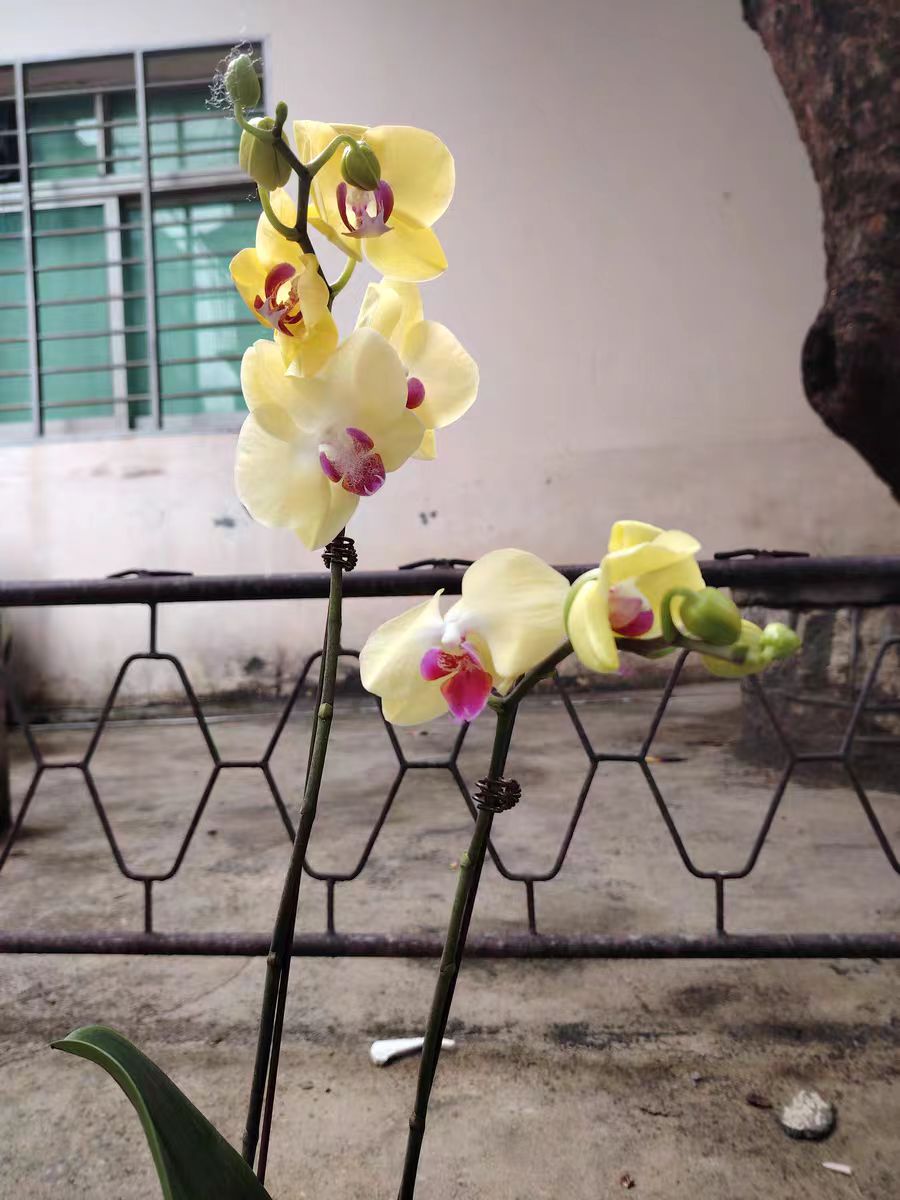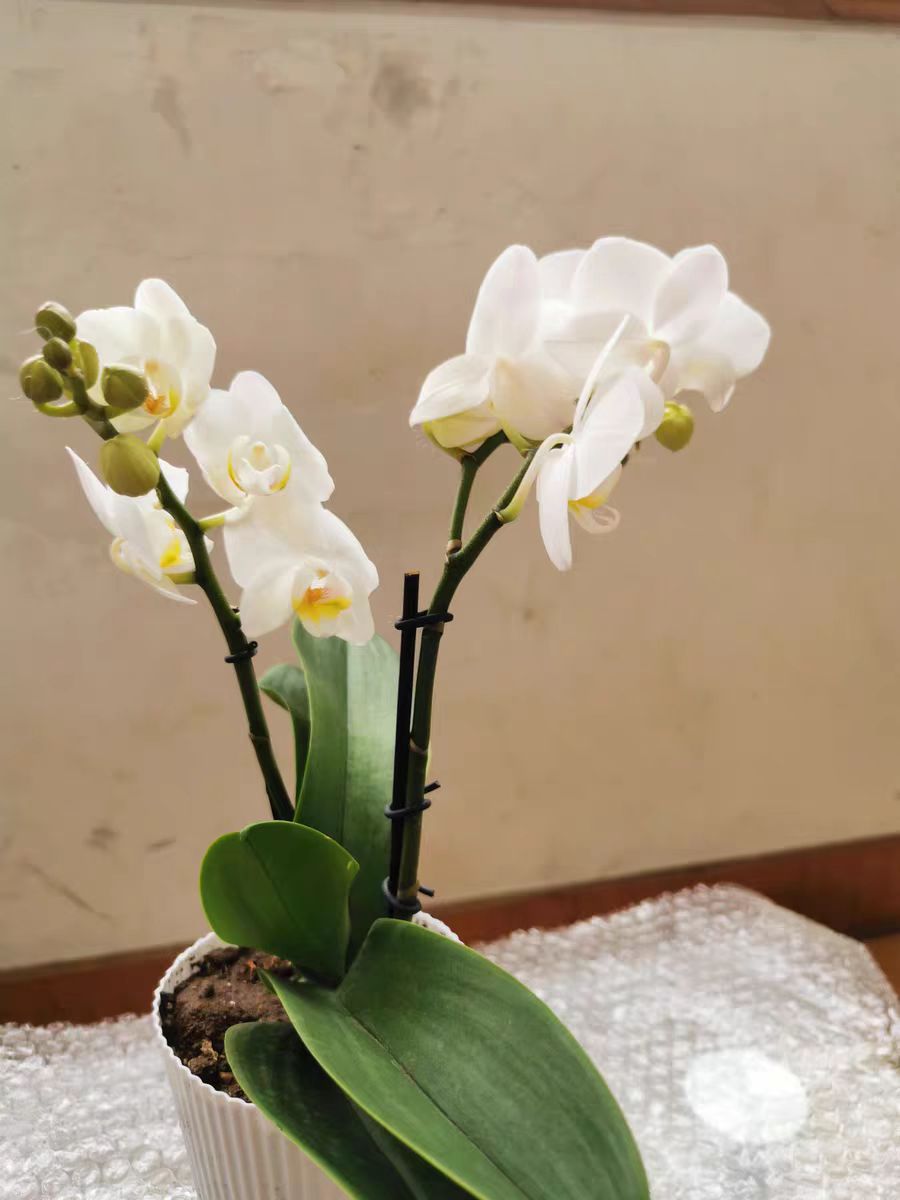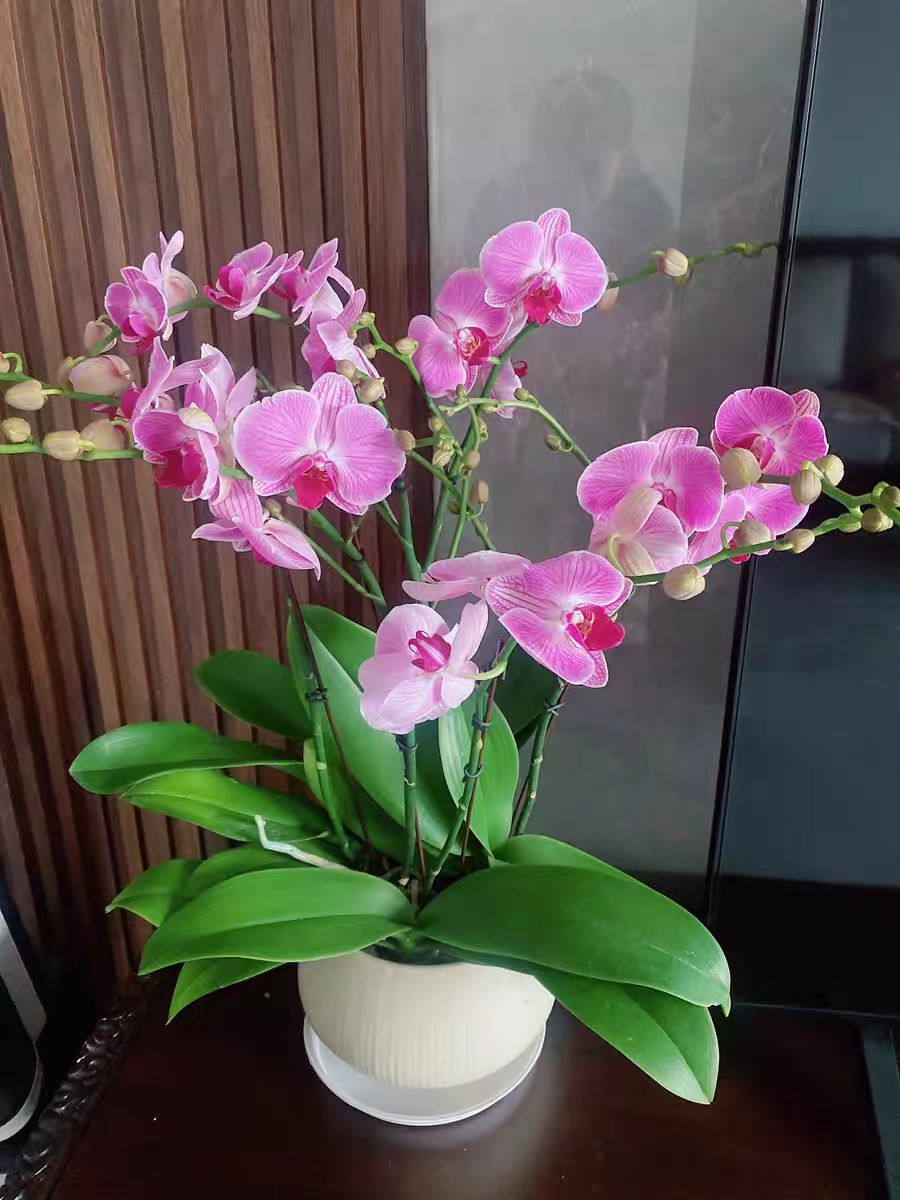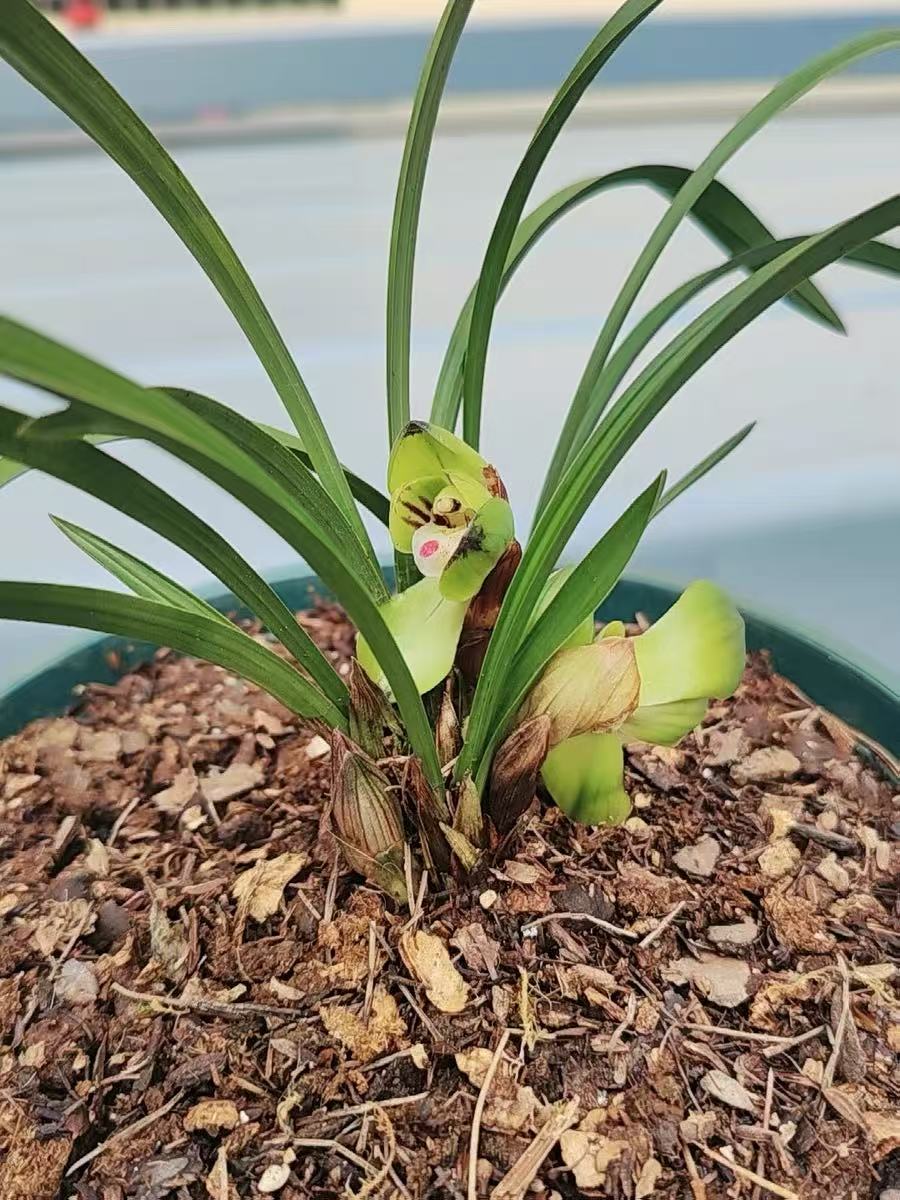When we are in the flower market choosing phalaenopsis, how can we accurately distinguish their quality and master the key points of identification? This is not only related to whether we can select the desired plants, but also to the subsequent cultivation and ornamental experience.
Observe the Leaves to Identify Health: The leaves are a visual manifestation of the health condition of phalaenopsis. The leaves of high-quality phalaenopsis are thick, plump, and shiny. When you touch them with your hands, you can feel an obvious toughness. The color of the leaves is also crucial. A lush green and uniform color indicates that the plant is growing well and carrying out photosynthesis fully. At the same time, pay attention to the integrity of the leaves. There should be no disease spots, no yellowing, no wrinkles, and no mechanical damage. If brown or black spots appear on the leaves, it is likely that the plant has been infected with a disease. Yellowing may be due to improper cultivation, such as excessive or insufficient watering, or inappropriate lighting. Wrinkles may mean that the plant is short of water or the growth environment is not good. Therefore, when choosing, be sure to carefully check every detail of the leaves and exclude the plants with flaws.
Examine the Roots to Gauge Vitality: The roots are the key organs for phalaenopsis to absorb nutrients and water, and their condition directly affects the vitality of the plant. The roots of healthy phalaenopsis are thick, white, and the root tips are light green, full of vitality. When you gently lift the plant, you can feel the roots clinging tightly to the substrate, which indicates that the roots are well-developed and have a strong absorption capacity. If the roots are soft, black, or shriveled, it means that the health of the plant has been seriously threatened. Soft and black roots are mostly caused by excessive watering, leading to root rot due to lack of oxygen. Shriveled roots may be caused by long-term water shortage or insufficient nutrients. Even if such a plant seems normal at present, it will be very difficult to cultivate later and it is difficult to restore its vitality, so it is not advisable to choose it.
Appreciate the Flower Posture to Distinguish Quality: The flowers are the essence of phalaenopsis and an important basis for distinguishing its quality. First, consider the number of flowers. Under the same cultivation conditions and plant size, a larger number of flowers means that the plant is stronger and has sufficient nutrient reserves. Second, look at the size and shape of the flowers. High-quality phalaenopsis have large flower shapes, stretched petals, regular shapes, and a harmonious proportion of all parts. In terms of flower color, those with bright and pure colors, without variegation or fading, are better. Moreover, the degree of flower opening should not be ignored. Choosing plants that are in the initial blooming or full blooming stage, with firm and non-wilting flowers, allows us to enjoy a longer viewing period. In addition, check whether there are any signs of diseases and pests on the flowers to ensure the high quality of the flowers.
Evaluate the Overall Appearance to Determine Superiority: In addition to the above local characteristics, the overall shape and coordination of phalaenopsis should not be ignored. For a good phalaenopsis, the leaves are evenly distributed and arranged in an orderly manner, and the plant has a tall and upright shape, giving people a feeling of vitality, symmetry, and beauty. The height and number of flower spikes should also match the size of the plant, with an appropriate proportion. At the same time, consider whether the phalaenopsis matches the flower pot harmoniously. A beautiful and suitable flower pot can enhance the charm of the plant significantly. The overall harmony not only improves the ornamental value but also reflects from the side that the plant has received good cultivation and management during the growth process.
When choosing phalaenopsis, we need to comprehensively consider multiple aspects such as the leaves, roots, flowers, and the overall appearance. By applying these identification key points and training our discerning eyes, we can select high-quality, healthy, and beautiful phalaenopsis from among numerous plants.
How to Distinguish the Quality of Phalaenopsis?

Share with
Tagged in :




Leave a Reply